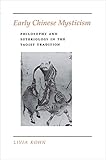Early Chinese Mysticism : Philosophy and Soteriology in the Taoist Tradition / Livia Kohn.
Material type: TextPublisher: Princeton, NJ : Princeton University Press, [2021]Copyright date: ©1992Description: 1 online resource (234 p.)Content type:
TextPublisher: Princeton, NJ : Princeton University Press, [2021]Copyright date: ©1992Description: 1 online resource (234 p.)Content type: - 9781400844463
- Mysticism -- Taoism
- Taoist philosophy
- RELIGION / Taoism (see also PHILOSOPHY / Taoist)
- Baopuzi
- Being-cognition
- Confucius
- Dark Learning
- Erjiao lun
- Fuqi jingyi lun
- Ge Xuan
- Great Ultimate
- Huangting jing
- Jade Emperor
- Jizang
- Kaltenmark, Maxime
- Lao-Zhuang tradition
- Liezi
- Liu Ling
- Nāgārjuna
- Pure Land
- Queen Mother of the West
- Shuijing zhu
- Shujing
- Sun Simiao
- Tao Hongjing
- Tao-nature
- Wang Qiao
- Xiaodao lun
- Yang Zhu
- Zhenzheng lun
- absolute
- brain hemispheres
- chaos
- drunkenness
- equality of all things
- fangshi
- fasting
- medicine
- monasticism
- ontology
- orbs, five
- perennial philosophy
- rhapsody
- scriptures
- value judgments
- 299/.514422/09 20
- online - DeGruyter
| Item type | Current library | Call number | URL | Status | Notes | Barcode | |
|---|---|---|---|---|---|---|---|
 eBook
eBook
|
Biblioteca "Angelicum" Pont. Univ. S.Tommaso d'Aquino Nuvola online | online - DeGruyter (Browse shelf(Opens below)) | Online access | Not for loan (Accesso limitato) | Accesso per gli utenti autorizzati / Access for authorized users | (dgr)9781400844463 |
Browsing Biblioteca "Angelicum" Pont. Univ. S.Tommaso d'Aquino shelves, Shelving location: Nuvola online Close shelf browser (Hides shelf browser)

|

|

|

|

|

|

|
||
| online - DeGruyter Gymnastics of the Mind : Greek Education in Hellenistic and Roman Egypt / | online - DeGruyter Lives of Indian Images / | online - DeGruyter Dostoevsky : The Seeds of Revolt, 1821-1849 / | online - DeGruyter Early Chinese Mysticism : Philosophy and Soteriology in the Taoist Tradition / | online - DeGruyter Wilhelm Dilthey: Selected Works, Volume III : The Formation of the Historical World in the Human Sciences / | online - DeGruyter A Shared World : Christians and Muslims in the Early Modern Mediterranean / | online - DeGruyter Through the Eye of a Needle : Wealth, the Fall of Rome, and the Making of Christianity in the West, 350-550 AD / |
Frontmatter -- Contents -- Preface and Acknowledgments -- INTRODUCTION. Mysticism: The Chinese Case -- CHAPTER ONE. Mysticism: Experience, Practice, and Philosophy -- CHAPTER TWO. The Foundations of Chinese Mysticism -- CHAPTER THREE. Developments in Commentary Literature -- CHAPTER FOUR. The Immortalization of Philosophical Taoism -- CHAPTER FIVE. Ecstatic Explorations of the Otherworld -- CHAPTER SIX. The Impact of Buddhism -- CHAPTER SEVEN. The Tang Synthesis -- CONCLUSION. Early Chinese Mysticism: An Evaluation -- Notes -- Glossary -- Bibliography -- Index
restricted access online access with authorization star
http://purl.org/coar/access_right/c_16ec
Did Chinese mysticism vanish after its first appearance in ancient Taoist philosophy, to surface only after a thousand years had passed, when the Chinese had adapted Buddhism to their own culture? This first integrated survey of the mystical dimension of Taoism disputes the commonly accepted idea of such a hiatus. Covering the period from the Daode jing to the end of the Tang, Livia Kohn reveals an often misunderstood Chinese mystical tradition that continued through the ages. Influenced by but ultimately independent of Buddhism, it took forms more various than the quietistic withdrawal of Laozi or the sudden enlightenment of the Chan Buddhists. On the basis of a new theoretical evaluation of mysticism, this study analyzes the relationship between philosophical and religious Taoism and between Buddhism and the native Chinese tradition. Kohn shows how the quietistic and socially oriented Daode jing was combined with the ecstatic and individualistic mysticism of the Zhuangzi, with immortality beliefs and practices, and with Buddhist insight meditation, mind analysis, and doctrines of karma and retribution. She goes on to demonstrate that Chinese mysticism, a complex synthesis by the late Six Dynasties, reached its zenith in the Tang, laying the foundations for later developments in the Song traditions of Inner Alchemy, Chan Buddhism, and Neo-Confucianism.
Mode of access: Internet via World Wide Web.
In English.
Description based on online resource; title from PDF title page (publisher's Web site, viewed 30. Aug 2021)


